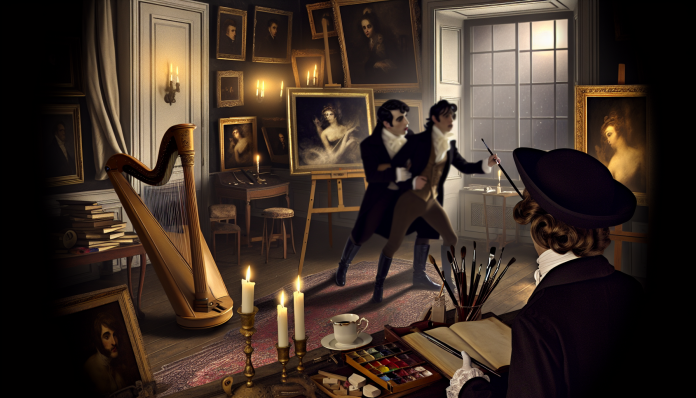Introduction
William Shakespeare, the Bard of Avon, created some of the most passionate and timeless poetry in human history. His sonnets, particularly those exploring themes of love and lust, resonate not only with literary enthusiasts but also with anyone who has experienced the tumultuous waves of romance. Central to many of these works are the scandals of the age—the affairs, intrigues, and betrayals that gripped the Elizabethan court and society. Among these captivating tales are the love affairs of the Earl of Southampton, Henry Wriothesley, and his controversially celebrated relationship with Shakespeare, who became entangled in the turbulence of his noble patron’s life.
The late 16th to early 17th century was a period of strict societal norms regarding love and relationships. The monarchical system dictated the lives of the aristocracy, elevating their transgressions to public fascination. Love was often dictated not by passion but by strategic alliances, yet the whispers of passion often broke through the rigidly maintained decorum of the time.
The Scandal
Henry Wriothesley, the 3rd Earl of Southampton, was not just a noble; he was a man whose charm and good looks captured the hearts of many. His tumultuous relationship with Shakespeare, which has often been interpreted as a deep, possibly romantic bond, remains a subject of debate among scholars. The true scandal, however, came after Southampton’s involvement in the failed Essex Rebellion in 1601, an event that thrust him into the political spotlight for less than noble reasons.
As the Earl conspired against the Queen, tensions flared. The political scandal placed Southampton in dire straits, risking his life and reputation. Shakespeare’s sonnets (particularly Sonnet 29 and 30) are believed to reflect the heartache and despair of Southampton’s imprisonment and the turmoil of their relationship.
The poet’s deep emotional response to Southampton’s plight is evident in Sonnet 30:
“When to the sessions of sweet silent thought / I summon up remembrance of things past, / I sigh the lack of many a thing I sought, / And with old woes new wail my dear time’s waste.”
The bond between the two men was not merely artistic. It was rumored that their relationship blurred the lines of friendship and attraction, a notion scandalous enough to spark debates in court and among the public.
Moral and Cultural Analysis
Society’s reaction to Southampton’s scandal was steeped in gossip and trepidation. While some viewed it as an act of desperation and folly, others saw it as a testament to the tensions between loyalty, love, and ambition. The consequences for Southampton were severe; were it not for Queen Elizabeth’s sudden death and the subsequent leniency from King James I, he might have faced execution for treason.
Contrast this with modern society, where love affairs—especially those unfolding under public scrutiny—often yield mixed reactions but are rarely viewed through the severe moral lens of the past. In today’s context, relationships that defy societal norms are often celebrated, and personal struggles are frequently met with public empathy rather than condemnation.
- Then: Tragic outcomes and social disgrace were common.
- Now: Scandals often lead to social media discussions, but personal redemption arcs can emerge.
This nuance illustrates a significant cultural shift, from an era where honor was intertwined with the state to one where individual desire can be expressed with greater freedom, albeit still facing challenges.
In the backdrop of Shakespeare’s work lies a poignant legacy of love, turmoil, and societal constraints. The passionate sonnets inspired by the trials of love are a reminder that while times may change, the heart’s complexities remain timeless.

